Understanding Zeitgeist of the 20th Century: From Modern Times to the era of Great Dictators
Hello Everyone 😊,
This blog is prepared as a part of a thinking activity assigned by Dilip Barad Sir to understand the Zeitgeist of the 20th Century: From Modern Times to the Era of Great Dictators.
In this blog, we'll talk about the key features of the 20th century and how they appear in Charlie Chaplin's film 'The Great Dictator'
Introduction of Film 'The Great Dictator' :
"The Great Dictator" is a 1940 satirical comedy-drama film written, directed, and starring Charlie Chaplin. It's a political satire that lampoons Adolf Hitler and fascism. Chaplin plays dual roles as a Jewish barber and a fictional dictator, Adenoid Hynkel. The film criticizes totalitarianism, anti-Semitism, and war. Despite initial concerns about its political content, the movie received critical acclaim and is considered one of Chaplin's masterpieces. "The Great Dictator" delivers a powerful message about humanity and remains relevant for its bold social commentary.
The movie begins with an introduction that effectively conveys its theme through the unfolding text.
Started in Warfield:
The opening scene of "The Great Dictator" features a shot of a battlefield during World War I. Amidst the chaos, we see soldiers in the trenches and the protagonist, a Jewish barber, bravely fighting. The barber saves a fellow soldier, and we learn that he suffers from memory loss after an airplane crash. This sets the stage for the character's journey and introduces the context of the wartime setting.
Use of Modern Weapons:
In this scene, the movie portrays the use of big weapons and destructive technology to harm enemies. It proudly showcases a massive cannon known as the "super gun," presenting it as a symbol of power. However, the film uses these moments to ridicule the notion that enormous weapons can solve problems. It aims to highlight the absurdity of relying excessively on destructive technology. Ultimately, the message conveyed is that peace and understanding hold greater importance than relying on big and dangerous weapons.
In this part of the movie, we see how commanders in the army give orders to soldiers. The soldiers have to follow these orders and can't come up with their own ideas during war. It shows that soldiers depend on the commands they receive and can't do things their own way. It's like there's a strict structure in the military, and this scene highlights the challenges soldiers face when they have to stick to orders rather than using their own judgment in the heat of battle.
In this part of the movie, a soldier is stuck among fences on the battlefield. It's like a powerful image illustrating how people feel trapped when they have to follow strict rules and authority. The soldier, surrounded by barbed wire, symbolizes the notion that some individuals feel restricted and cannot be themselves. This scene serves as a portrayal of the importance of breaking free from excessive rules, allowing people to be more free and understanding.
In this frame we can find 'Ghetto', the depiction of the ghetto is a stark portrayal of poverty and oppression. The scenes highlight crowded and run-down living conditions, reflecting the harsh realities faced by marginalized communities. The film skillfully uses visual storytelling to convey the social issues prevalent in the ghetto, underscoring Chaplin's commentary on the inequities of the time.
The Dictator:
In this cinematic moment, Charlie Chaplin skillfully mimics Adolf Hitler's distinctive speech delivery, offering a satirical portrayal of the dictator's ability to manipulate crowds through hand gestures. The continuous street speech in the background serves as a recurring element in the movie's storyline. Notably, during that historical period, there was a deliberate effort to distribute free radios among the populace, facilitating the widespread dissemination of propaganda messages.
By this picture, we can see that impact of Hynkel . In "The Dictator," Charlie Chaplin's character, often referred to as Hynkel, provides a satirical depiction of a dictator. His personality reflects arrogance, authoritarianism, and a penchant for manipulation. Chaplin uses humor to criticize the traits associated with dictatorial figures, highlighting the dangers of unchecked power and the impact on individuals and societies.
Charlie Chaplin adeptly exposes the camera-conscious behavior of politicians in two frames. In the first, he feigns a smile, showcasing insincerity to the camera. The subsequent frame reveals a swift shift in demeanor, exposing the calculated nature. Chaplin's act of cleaning hands after holding a baby symbolizes the planned aspect of political propaganda, offering a poignant critique on the deceptive tactics employed by public figures. This highlights the manufactured nature of their actions, drawing parallels to modern politics.
Within this perticular frame, the appearance of a shop with the cruel inscription "Jew" acts as a powerful emblem of anti-Semitism and deep-seated discrimination. The visual signal echoes beyond the screen, carrying the weight of Jewish communities' historical oppression, discrimination, and hatred. This striking artwork powerfully conveys the manifestation of hatred and intolerance, vividly displaying the focused anger directed towards a single group simply on the basis of their religious or ethnic identity. The shop, with its condemning name, becomes a heartbreaking representation of the continuous struggle against prejudice, acting as a profound statement on the historical and pervasive issues faced by marginalised people.
This picture shows that he disrespects the actors and we can also find that he is very self-centered, so he was used to make his picture and statue. It is showing exhibitionism.
Everyone in the film greets Hynkel with "Hail Hynkel" and a raised hand to demonstrate
surrender. Even sculptures imitate this, mocking the dictator's demand for control. The cross symbols emphasise the connection to Nazi beliefs, implying a concept of obedience. It's a metaphor for leaders desiring too much power over their people in the film.
Repetitive promotion of familiar faces in a frame can signal nepotism and a lack of diversity. It suggests a system favoring those with connections, potentially excluding deserving individuals and limiting fresh perspectives or talents. This imagery critiques biases and unfair practices in opportunities.
Charlie Chaplin cleverly uses a satirical food fight scene between two characters, Napaloni and Hynkel, in this frame to criticise the ridiculousness of political battles. The action takes place at a feast, where the two leaders engage in a childish and disorderly food war, with food serving as metaphorical weaponry. This amusing yet pointed sequence is a metaphor for the absurdity of war and the insignificance of political debates. Through this satirical representation, Chaplin shows the folly of leaders who resort to war over little issues, highlighting the ridiculousness of their behaviour. The food struggle becomes a striking visual metaphor for the futility of war and the foolishness of those in power, urging viewers to consider the irrationality inherent in political conflict.
Impactful last speech of the Movie:
In the culminating sequence of the film, the character Hynkel, deemed "great," undergoes a significant exchange with the Jewish barber, who subsequently delivers an impactful and memorable speech. Within this poignant moment, Charlie Chaplin uses the barber's words to articulate a profound message about the fundamental values of equality, peace, and freedom. This eloquent speech not only serves as the defining essence of the entire movie but has also garnered widespread acclaim, establishing itself as a celebrated and influential piece of cinematic oratory.

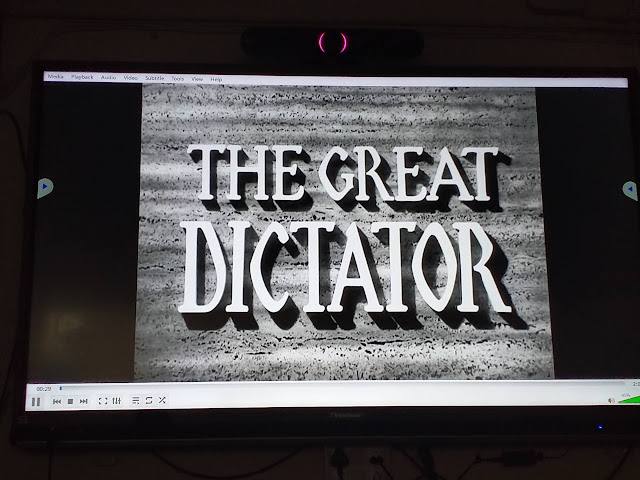


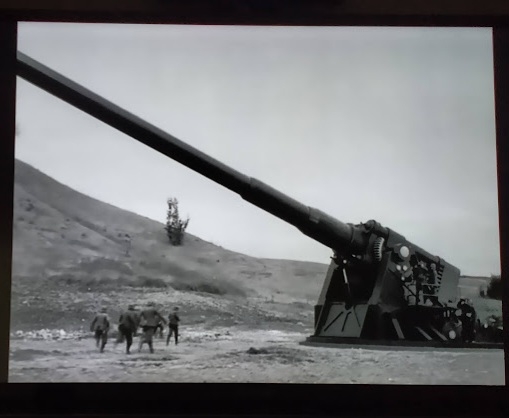




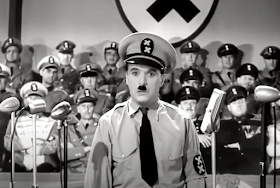

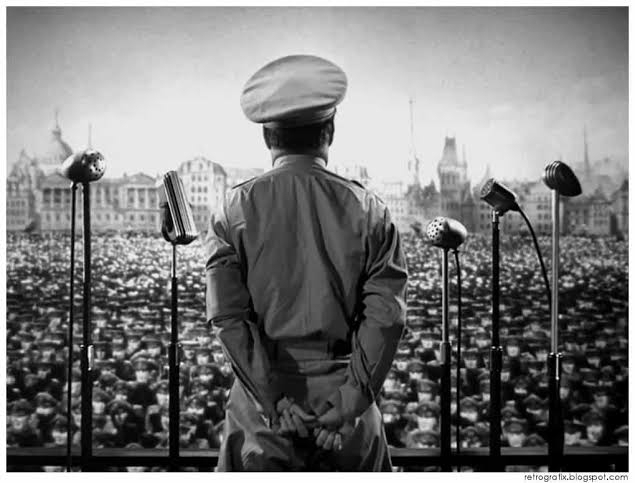




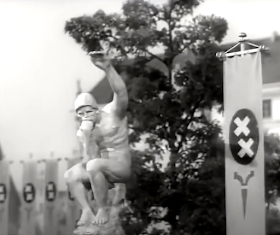



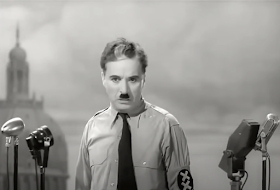


No comments:
Post a Comment